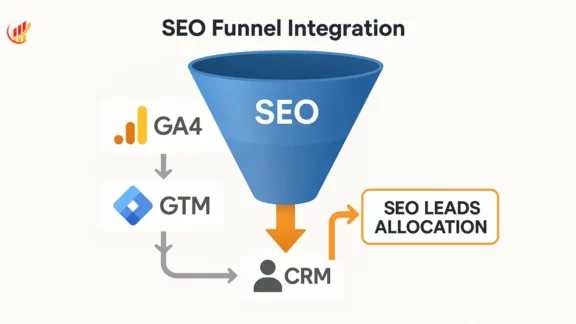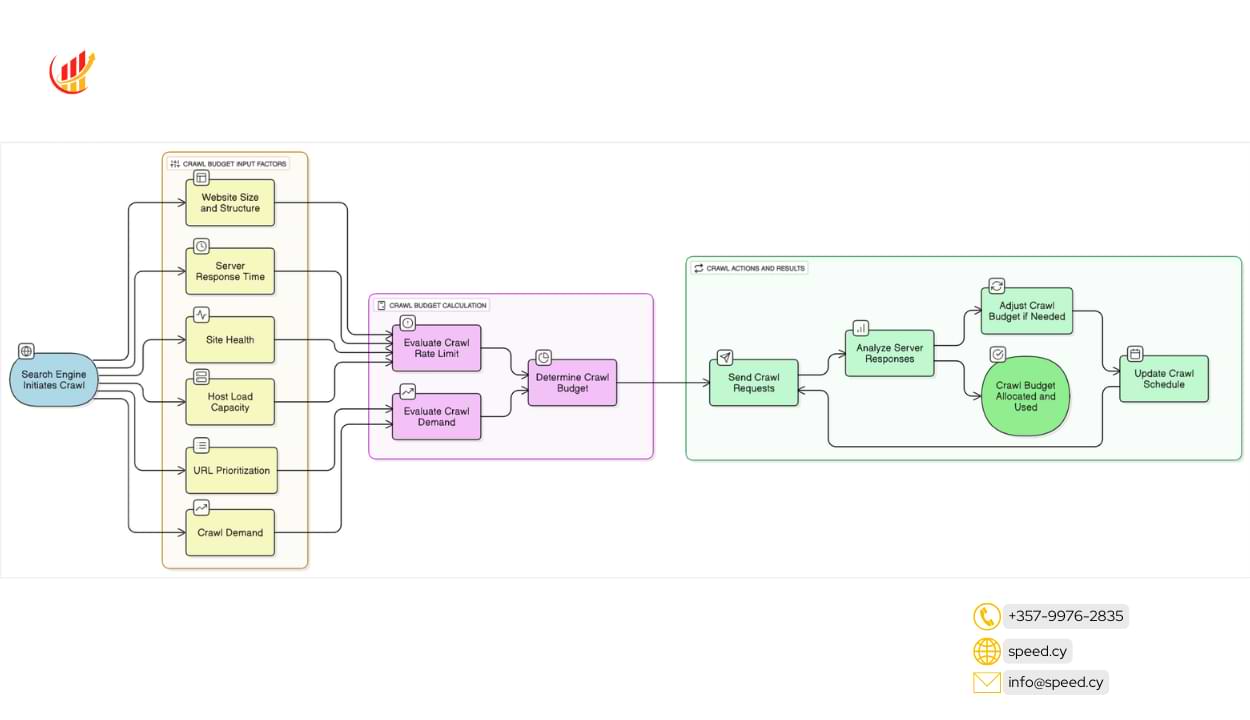Today, as hard as it can be, visibility is viability. Meaning that if your potential customers can’t find you online, you might as well not exist. This is where Search Engine Optimization (SEO) transitions from a simple marketing buzzword to a fundamental business imperative.
But achieving sustainable online growth isn’t about haphazardly throwing keywords at a webpage; it requires a strategic, a SEO Business Plan.
This isn’t just another task for the marketing department; it’s a strategic initiative that demands C-suite understanding, CMO-level orchestration, and expert execution. It’s the roadmap that aligns your entire organization towards a common goal: dominating search results, driving qualified traffic, and, most importantly, achieving a tangible Return on Investment (ROI).
This comprehensive guide will demystify the SEO Business Plan. We’ll explore its critical components, define roles and responsibilities across your organization, and outline the steps to build and execute a plan that delivers results, from the ground up.
[Image Placeholder: A visual representing a strategic roadmap or a growth chart pointing upwards with SEO icons]
Why Your Business Can’t Afford Not to Have an SEO Business Plan
Many businesses approach SEO reactively – a blog post here, a keyword tweak there. This fragmented approach rarely yields significant or lasting results. An SEO Business Plan, however, provides:
- Strategic Alignment: It ensures your SEO efforts are directly tied to your overarching business objectives. Are you aiming for brand awareness, lead generation, direct sales, or market expansion? Your SEO plan will reflect these goals.
- Resource Optimization: It dictates how you allocate budget, time, and personnel for maximum impact, preventing wasted effort on low-value activities.
- Measurable ROI: A solid plan establishes clear Key Performance Indicators (KPIs) and a framework for tracking progress. This allows you to demonstrate the financial value of SEO to stakeholders.
- Long-Term Sustainability: SEO is a marathon, not a sprint. A business plan provides the long-term vision and structure needed to build and maintain search visibility over time, adapting to algorithm changes and market shifts.
- Competitive Advantage: While your competitors might be dabbling, a comprehensive plan allows you to systematically capture market share in the digital space.
- Urgency & Proactivity: It shifts the mindset from “SEO is nice to have” to “SEO is critical for survival and growth,” fostering a proactive approach across the organization.
The View from the Top: The C-Suite’s Role in SEO
SEO success starts at the highest level. The C-suite, particularly the CEO and CFO, doesn’t need to know the intricacies of canonical tags, but they do need to understand SEO’s strategic value and champion its integration.
What C-Level Executives Should Do:
- Champion SEO: Understand and articulate the link between SEO performance and core business metrics (revenue, market share, profitability).
- Allocate Sufficient Budget: Recognize that SEO is an investment, not an expense. Provide the necessary resources for tools, talent (in-house or agency), and content creation.
- Foster a Culture of SEO: Encourage cross-departmental collaboration (marketing, IT, sales, product) to ensure SEO considerations are integrated into all relevant business processes.
- Demand Accountability (Based on ROI): Set high-level expectations for SEO performance, focusing on its contribution to the bottom line, not just rankings.
- Embrace Long-Term Vision: Understand that significant SEO results take time and require sustained commitment.

Orchestrating Success: The CMO’s Role in the SEO Plan
The Chief Marketing Officer (CMO) acts as the bridge between C-suite strategy and a -level execution. They are responsible for integrating SEO into the broader marketing mix and ensuring its effectiveness.
What CMOs at the Manager Level Should Do:
- Own the SEO Strategy: Develop or oversee the development of the SEO Business Plan, ensuring it aligns with marketing and business goals.
- Define KPls and Reporting: Establish clear, meaningful KPIs (beyond just rankings – think traffic quality, conversion rates, cost per acquisition) and ensure regular, insightful reporting is delivered to the C-suite.
- Build the Right Team/Secure Partners: Decide whether to build an in-house team, hire an agency, or use a hybrid model. Oversee the hiring and management process.
- Ensure Integration: Make sure SEO isn’t siloed. It needs to work hand-in-glove with PPC, content marketing, social media, PR, and product development.
- Facilitate Cross-Functional Collaboration: Work with IT for technical implementation, sales for lead quality feedback, and content teams for strategic alignment.
- Stay Informed: Keep abreast of major SEO trends, algorithm updates, and competitive shifts to guide strategy.
In the Trenches: The SEO Expert’s Role and Tasks
This is where the rubber meets the road. SEO experts (whether managers, specialists, or agency partners) are responsible for implementing the plan and achieving the defined KPls.
What SEO Experts Should Do:
- Deep Dive Research: Conduct thorough keyword research, competitor analysis, market analysis, and audience research.
- Technical SEO Audits & Implementation: Identify and fix technical issues (site speed, mobile-friendliness, crawlability, indexation, schema markup) that hinder performance.
- On-Page Optimization: Optimize page titles, meta descriptions, headers, content, images, and internal linking for target keywords and user experience.
- Content Strategy Execution: Work with content creators to develop high-quality, relevant, and engaging content that targets specific keywords and user intent.
- Off-Page SEO & Link Building: Develop and execute strategies to earn high-quality backlinks from reputable sources.
- Monitoring & Analysis: Continuously monitor rankings, traffic, conversions, and other KPls using tools like Google Analytics, Google Search Console, and third-party platforms (Ahrefs, SEMrush, Moz).
- Reporting & Iteration: Provide detailed performance reports to the CMO, analyze results, and make data-driven recommendations for strategy adjustments.
- Algorithm Awareness: Stay constantly updated on Google’s (and other search engines’) algorithm changes and best practices.
Anatomy of a World-Class SEO Business Plan
A robust SEO Business Plan isn’t a simple document; it’s a multi-faceted strategy. Here are the essential components it must cover:
1. Business Goals & SEO Objectives
- Why: You need to know why you’re doing SEO.
- How: Define your primary business objectives (e.g., increase online sales by 20%, generate 500 qualified leads per month, become the #1 resource for ‘X’ topic). Then, translate these into specific, measurable, achievable, relevant, and time-bound (SMART) SEO objectives (e.g., achieve top 3 rankings for 10 core commercial keywords in 12 months, increase organic traffic by 30% in 6 months, improve organic conversion rate by 15%).
2. Audience & Market Analysis
- Why: You can’t rank if you don’t understand who you’re trying to reach and the market they exist in.
- How: Develop detailed buyer personas. Understand their pain points, search habits, the language they use, and the content they consume. Analyze market trends, seasonality, and overall search demand in your niche.
3. Competitive Landscape
- Why: You need to know who you’re up against and what they’re doing right (and wrong).
- How: Identify your key online competitors (they might differ from your offline ones). Analyze their websites, keyword strategies, backlink profiles, content, and technical SEO. Look for gaps and opportunities you can exploit.
4. Keyword Strategy & Research
- Why: Keywords are the foundation of SEO, connecting what people search for with your content.
- How: Go beyond simple “money” keywords. Build a comprehensive strategy encompassing:
- Informational Keywords: Attract users seeking knowledge (top/middle funnel).
- Navigational Keywords: Users looking for your specific brand or site.
- Transactional Keywords: Users ready to buy or convert (bottom funnel).
- Long-Tail Keywords: Less competitive, highly specific phrases.
- Semantic Keywords (LSI): Related terms that provide context.
- Map these keywords to the buyer journey and specific pieces of content.
5. Technical SEO Foundation
- Why: If search engines can’t crawl, index, and understand your site, even the best content won’t rank.
- How: Conduct a thorough technical audit covering:
- Crawlability & Indexability: Robots.txt, XML sitemaps, crawl errors.
- Site Architecture & Internal Linking: Logical structure, easy navigation.
- Site Speed: Core Web Vitals (LCP, FID, CLS).
- Mobile-Friendliness: Responsive design.
- HTTPS Security: Secure your site.
- Structured Data (Schema): Help search engines understand content context.
- Duplicate Content & Canonicals: Avoid penalties and consolidate link equity.

6. Content Strategy & Marketing
- Why: Content is the fuel for your SEO engine. It attracts users, earns links, and demonstrates expertise.
- How: Develop a content plan based on your keyword research and audience analysis. This includes:
- Content Types: Blog posts, articles, guides, case studies, videos, infographics, webinars, tools.
- Content Calendar: Schedule creation and publication.
- Quality Standards: Ensure content is E-E-A-T (Experience, Expertise, Authoritativeness, Trustworthiness).
- Content Gaps: Identify topics your competitors cover that you don’t (and vice-versa).
- Content Promotion: How will you get eyeballs on your content beyond search?
7. On-Page SEO
- Why: This tells search engines what each specific page is about.
- How: Implement best practices for:
- Title Tags & Meta Descriptions.
- Header Tags (H1, H2, H3…).
- Keyword Integration (natural, not stuffing).
- Image Optimization (Alt Text).
- Internal Linking.
- URL Structure.
- User Experience (UX) Signals.
8. Off-Page SEO & Link Building
- Why: Backlinks remain a crucial ranking factor, acting as votes of confidence from other websites.
- How: Develop a sustainable, ethical link-building strategy:
- Guest Blogging: On relevant, high-authority sites.
- Digital PR: Creating link-worthy content and campaigns.
- Resource Link Building: Creating valuable resources others will link to.
- Broken Link Building: Finding broken links on other sites and offering your content as a replacement.
- Unlinked Brand Mentions: Finding mentions of your brand and requesting a link.
- Avoid: Link schemes, PBNs, and low-quality directories.
9. Local SEO (If Applicable)
- Why: Essential for businesses targeting customers in specific geographic areas.
- How: Optimize your Google Business Profile, manage local citations (NAPs – Name, Address, Phone number consistency), encourage local reviews, and create location-specific content.
10. Measurement, Reporting & KPIs
- Why: You can’t manage what you don’t measure. This proves ROI.
- How: Set up robust tracking (Google An6. Content Strategy & Marketing
- Why: Content is the fuel for your SEO engine. It attracts users, earns links, and demonstrates expertise.
- How: Develop a content plan based on your keyword research and audience analysis. This includes:
- Content Types: Blog posts, articles, guides, case studies, videos, infographics, webinars, tools.
- Content Calendar: Schedule creation and publication.
- Quality Standards: Ensure content is E-E-A-T (Experience, Expertise, Authoritativeness, Trustworthiness).
- Content Gaps: Identify topics your competitors cover that you don’t (and vice-versa).
- Content Promotion: How will you get eyeballs on your content beyond search?
7. On-Page SEO
- Why: This tells search engines what each specific page is about.
- How: Implement best practices for:
- Title Tags & Meta Descriptions.
- Header Tags (H1, H2, H3…).
- Keyword Integration (natural, not stuffing).
- Image Optimization (Alt Text).
- Internal Linking.
- URL Structure.
- User Experience (UX) Signals.
8. Off-Page SEO & Link Building
- Why: Backlinks remain a crucial ranking factor, acting as votes of confidence from other websites.
- How: Develop a sustainable, ethical link-building strategy:
- Guest Blogging: On relevant, high-authority sites.
- Digital PR: Creating link-worthy content and campaigns.
- Resource Link Building: Creating valuable resources others will link to.
- Broken Link Building: Finding broken links on other sites and offering your content as a replacement.
- Unlinked Brand Mentions: Finding mentions of your brand and requesting a link.
- Avoid: Link schemes, PBNs, and low-quality directories.
9. Local SEO (If Applicable)
- Why: Essential for businesses targeting customers in specific geographic areas.
- How: Optimize your Google Business Profile, manage local citations (NAPs – Name, Address, Phone number consistency), encourage local reviews, and create location-specific content.
10. Measurement, Reporting & KPIs
- Why: You can’t manage what you don’t measure. This proves ROI.
- How: Set up robust tracking (Google Analytics 4, Google Search Console, rank trackers). Define your core KPls and create dashboards/reports tailored to different stakeholders (C-suite = ROI/Revenue; CMO = Leads/Traffic Quality; SEO Expert = Rankings/Technical Health). Track:
- Organic Traffic.
- Keyword Rankings (and their evolution).
- Conversion Rates (Goals, Leads, Sales).
- Bounce Rate & Engagement Metrics.
- Backlink Profile Growth & Quality.
- Crawl Errors & Site Health.
- Organic Share of Voice.
11. Budget & Resource Allocation
- Why: Defines the investment required for success.
- How: Detail the costs associated with:
- Tools: SEO platforms, analytics, rank trackers.
- Personnel: In-house salaries or agency fees.
- Content Creation: Writers, designers, videographers.
- Link Building/PR: Outreach costs or agency retainers.
- Technical Development: IT resources for implementation.
12. Timeline & Roadmap
- Why: Provides a clear path forward and sets expectations.
- How: Break down the plan into phases (e.g., Quarter 1: Audit & Foundation; Quarter 2: Content Push & On-Page; Quarter 3: Link Building & PR; Quarter 4: Refinement & Expansion). Assign responsibilities and set deadlines for key milestones.
Building Your Dream Team: Hiring & Interviewing SEO Experts
Whether you build in-house or hire an agency, finding the right talent is critical.
- In-House: Offers deep brand integration and focus but requires significant investment in talent and training.
- Agency: Provides access to specialized expertise and tools, often more cost-effective for specific tasks, but requires careful management and alignment.
- Hybrid: Combines an in-house manager with agency support for specialized areas.
When Interviewing:
- Look Beyond Rankings: Ask about how they achieve results. Focus on strategy, process, and ethics.
- Case Studies & Results: Ask for specific examples of past successes, with data to back them up.
- Technical Knowledge: Test their understanding of core technical SEO concepts.
- Strategic Thinking: Can they connect SEO tactics to business goals?
- Communication Skills: Can they explain complex concepts clearly and report effectively?
- Adaptability: How do they stay updated and adapt to changes?
- Beware of Guarantees: No legitimate SEO professional can guarantee #1 rankings.

From 0 to ROI: Executing Your SEO Business Plan
Execution is where most plans fail. It requires discipline, agility, and communication.
- Kick-off: Ensure everyone involved understands their roles, responsibilities, and the overall objectives.
- Phased Rollout: Follow your timeline, starting with foundational technical fixes and research before moving to content and off-page.
- Regular Check-ins: Hold weekly or bi-weekly meetings to review progress, address roadblocks, and adjust tactics.
- Consistent Reporting: Stick to your reporting schedule, providing insights, not just data dumps.
- Be Patient but Persistent: SEO takes time. Don’t panic if results aren’t immediate, but don’t be complacent either. Continuously analyze and refine.
- Celebrate Wins: Acknowledge milestones and successes to maintain morale and demonstrate value.
- Adapt: The digital landscape is dynamic. Be prepared to pivot your strategy based on performance data, algorithm updates, and market changes.
Need a Blueprint? The SEO Masterplan
Creating a comprehensive SEO Business Plan like the one outlined above is a significant undertaking. It requires expertise across multiple disciplines, from technical analysis to strategic marketing. Many businesses, from startups to large enterprises, struggle to piece it all together effectively.
Recognizing this challenge, we developed the SEO Execution Plan. This isn’t just a template; it’s a complete masterplan, built on years of experience and proven results. It provides a step-by-step framework, detailed checklists, and strategic insights covering every aspect discussed in this article – from C-suite alignment to a -level execution.
If you’re serious about transforming your online presence and driving measurable ROI through SEO, our masterplan provides the structured, professional guidance you need to succeed. It helps you avoid common pitfalls, optimize your resources, and build a sustainable SEO strategy that delivers long-term growth.
Conclusion: Build Your Future on a Solid SEO Foundation
An SEO Business Plan is no longer optional; it’s the cornerstone of a successful digital strategy. It provides the clarity, direction, and accountability needed to navigate the complexities of search and turn online visibility into tangible business growth.
By understanding the roles of everyone from the C-suite to the SEO expert, and by meticulously building and executing a plan that covers all the critical components – technical, content, on-page, off-page, and measurement – you can move from reactive tactics to proactive, ROI-driven strategy.
The journey from zero to SEO ROI requires commitment, resources, and expertise. Whether you build your plan internally or leverage a comprehensive resource like our SEO Execution Plan, the time to start building your SEO future is now. Don’t just compete online – dominate.



Leave a Comment